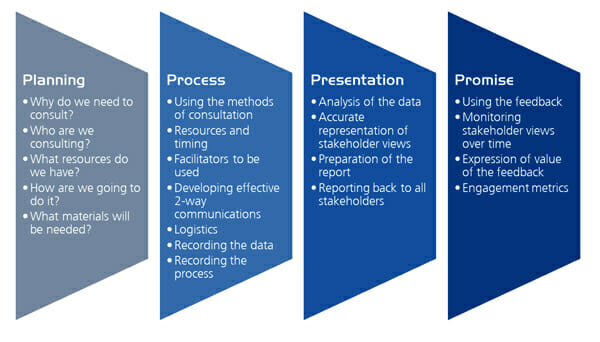In America, there is a strong belief that the success or failure of your venture comes down to individual drive. It’s you, and you alone, that can turn the tide in your favor. In reality, as even the most steadfast founders learn, much of your time will be devoted to appeasing external stakeholders. Sometimes, those who know the least about your vision will have the most influence over its chance of survival.
Navigating the C-suite requires knowing how to engage stakeholders by building and nurturing relationships. The meaningful enterprise has moved from a transactional foundation — where enterprises serve their own benefit, even at the expense of others — to a relational foundation — which acknowledges that interdependence among diverse parties is essential for sustained success. Here’s the thing about relying on others: it’s always slower in the short-term. But for those with the patience to sacrifice short-term speed for long-term agility, it can be incredibly rewarding.
Before we get too deep, a bit of housekeeping. What exactly is a stakeholder? A stakeholder is anyone who can affect or is affected by the actions of a corporation. The concept of the stakeholder was first used in 1963 at the Stanford Research Institute, and described them as “those groups without whose support the organization would cease to exist.” This description is as wonderful as it is vague, allowing you to cast the net as widely or as tightly as you wish. Is it those who directly fund you? Or those who provide those late-night emails of clarity when you’re spiraling? In short, yes. For a bit more guidance, look to the difference between internal and external stakeholders.
Internal stakeholders typically comprise employees, managers, owners, and in some cases, volunteers, interns, or students. The importance of consulting with internal stakeholders is self-evident. They are the ones on the front lines. They hear everything, know everything, and work across all touchpoints. Think of them as the physical engine. You can’t get a tune-up from a specialist without bringing them an actual machine. Most founders understand how vital their own team is. The trick is bringing that same love, care, and attention to outside counsel.
External stakeholders are those outside the corporation who interact with it in some way. This could be funders, investors, shareholders, advisors, banks, finance companies, suppliers, policymakers, legislators, social media influencers, and of course, customers. Each of these groups of stakeholders is usually termed a “constituency,” and each constituency represents a homogenous group usually holding a similar interest in the organization’s affairs. Think of them as the team of specialty mechanics, each having a particular, bespoke solution to make your engine run a little better.
When it works like it’s supposed to, stakeholder consultation results in a relationship of mutual benefit. It enables us to spot trends, emerging challenges, and risks. It brings a fresh set of eyes to your venture, offering new perspectives which can be used to improve project design and outcomes. And as anyone at a cocktail party has learned, playing nice can form unlikely collaborations and partnerships. All of this helps your brand to:
- Determine needs and expectations
- Identify perceptions and attitudes
- Evaluate implementations and actions
- Establish the brand values and positioning of the corporation as seen by others
- Ensure your decision making is more informed and in tune
- Administer a greater chance of implementation and activation
So, when and how do you bring in the troops? Kevin Crump, writer, and Customer Success Manager recommends weaving them in as early as possible.
“If you engage your stakeholders early in the project — ideally during the planning stage — everyone gets a common understanding of the scope, the timing, the budget, and the resource demands from the get-go,” he says. “This means no major surprises later in the lifecycle, and no ongoing divergence between stakeholder vision and reality. That’s why we have menus in restaurants. We don’t just expect the waiter to serve us exactly what we want without discussing it first.”
In this lovely diagram from B2B International, a B2B market research company, we see how a method of planning, process, presentation, and promise can be used to maintain effective communication throughout the entire lifecycle.

This outline is a great bird’s eye view of how to approach stakeholders. But what happens when you’re in the weeds with someone difficult? Here are four strategies for making sure you don’t burn your only bridge out of town.
1. Seeing. You can’t solve a problem if you can’t identify it. The first step is to clearly identify your stakeholders and figure out what motivates them. Primary stakeholders are those directly affected by the work. Customers often fall into this category. Secondary stakeholders are those indirectly affected by the work. This includes support teams or those impacted by the outcome. Key stakeholders are those with strong influence and vested interest. This would be the executives. Each group has different interests, objectives, and agendas — many of which will be in direct competition. Identifying and ranking their influence and interest will help keep projects moving in the right direction. The truth is, not all stakeholders are created equal, so sleuthing out who holds sway and who is your best champion will save you a lot of stress. Ask yourself questions like:
- What are their most pressing business needs?
- What is the best way to communicate with them?
- What information or details do they need?”
- Do they fully understand your work or do they need some extra explanation?
- Who influences them?
- What are they responsible for?
- Who do they report to?
2. Listening. This is much easier said than done but resist the urge to close communication channels just because you don’t like what you hear. When receiving negative feedback, I always have to remind myself that it’s very unlikely someone is doing this as a personal attack against me. (Though not impossible.) Nine times out of ten, even the most off-kilter comment is based on some insight, backroom conversation, or email you weren’t looped in on. Try to see where difficult stakeholders are coming from and put yourself in their shoes to better understand their motivation and goals. Do their needs align with your project’s objectives? Do they simply want things done a different way? Common ground isn’t always common, but it’s worth searching for.
3. Meeting. Never underestimate the power of individual communication. For one, it’s a more human, efficient way to explore diverging viewpoints. You can clear the air, vent, and hear things from a new perspective without the formality of a group presentation. And two, meeting without other stakeholders in the room takes the pressure off and prevents negative opinions from spreading. Sometimes, it’s about just letting someone feel that they are heard.
4. Proving. A sad truth: you’re probably going to lose a battle of opinions to a senior employee. That’s why you should arm yourself with cold, hard facts that support the direction you want to take.
“Change the game by quickly running a test and collecting some evidence,” says Marty Cagan of the Silicon Valley Product Group. “Move the discussion from opinions to data. Share what you’re learning very openly. It may be that neither of your opinions was right.”
Especially in data-hungry Silicon Valley, data will always trump hunches. More than being right, it shows you’re taking a more analytical approach to your role, which will bolster your credibility for the future. Even if you can’t find a mathematical proof point, you can use the voices of actual customers to make it less about your opinion and more about what’s right for the market.
In the immortal words of John Donne, no man is an island. As much as we’d like to singularly launch our idea into the Fortune 500, chances are we’ll need the help of external stakeholders. So, here’s to the power of compromise, communication, and diversity of opinion.
Emotive Brand is a brand strategy and design agency in San Francisco.





